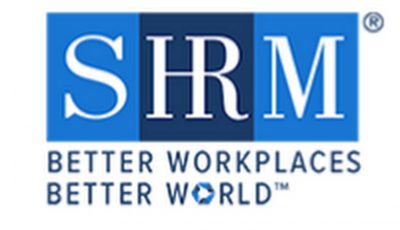‘Companies should consider offering 401(k) benefits to employees’

Gabrielle Bamba of ASC Trust Corp., third from right, sheds light on the 401(k) retirement plan during the Society for Human Resource Management NMI Chapter meeting last Thursday. Bamba said the bigger companies on Saipan are most often those that offer these benefits to employees. She is joined in the photo by SHRM officers.(Frauleine Villanueva-Dizon)
Only a handful of private companies on Saipan are currently offering the 401(k) retirement plan as a benefit to their employees.
According to Gabrielle Bamba of ASC Trust Corp., the bigger companies on Saipan, especially those who have affiliates or branches in Guam, are most often those that offer 401(k) benefits to their employees.
Speaking at the Society for Human Resource Management NMI Chapter monthly general membership meeting last Feb. 25, Bamba said companies should consider offering the benefit to their employees not only because it helps them and gives them an avenue to save for retirement, but also because it has benefits for the companies as well.
“The amounts that the company puts into the plan for their employees, they can take tax redemption on it. There’s a tax saving for the company. It’s an employee benefit. Employees like benefits and if they are able to do that to their list of benefits, as well as the company knowing that they’re helping their employees save for retirement then I think it’s a win-win situation,” Bamba said.
She added that the benefit helps companies attract and retain employees, especially on Saipan where the labor force is limited and in demand.
“It might be that one thing that’s going to encourage an employee to pick one over the other because one has more benefits than the other, and one has better benefits than the other,” Bamba said.
However, Bamba also pointed out that signing up for the plan is ultimately a decision of the employee.
“The employee always has the ability to opt out even if the employee has an automatic enrolment provision,” Bamba said.
Bamba said funds entered into the retirement account is a not easily accessible and can only be taken out through limited reasons such as actual retirement, if they qualify for hardship, and if they qualify for loans.
“The one thing we’d like to remind employees is that your retirement account in the 401(k) plan is not a savings account,” Bamba said.
Bamba also provided an introduction to the 401(k) programs, eligibility and enrollment, investments and returns, tax advantages, among others.
Bamba said part-timers can avail of the plan if they are at least 21 years old and render not less than 1,000 hours a year.
She also clarified that although 401(k) is employer-sponsored, companies doesn’t have to “match” the contribution of its employees.
“It’s a big misnomer that a company has to ‘match.’ When you have a retirement plan with 401(k), the company doesn’t have to make contributions to the plan. Of course it’s good that they do…but employers don’t have to make a matching contribution,” Bamba said.
On Saipan, Bamba also pointed out that it’s better to choose the “Roth” plan for 401(k).
“Basically because of the tax structure here on Saipan, the employee should be contributing on an after-tax basis. With the traditional pre-tax plan is they’re making their payment into the 401k and its reducing their taxables because what goes into the accounts, it’s tax-deferred,” Bamba said.
“With the Roth, they’re paying the taxes on it today. They’re not going to pay the taxes on it in the future. It’s really because if the employees leave later, or if Saipan increases its tax rates,” she added.
For employers, Bamba also discussed the types of services available from providers like their company, which are bundled, unbundled, and alliance.
The bundled service will provide employers all the investment, recordkeeping, administration, education, and services; however it is limited and investment offerings are restricted to funds offered by the vendor.
The unbundled service gives employers diverse options in services especially in investments but maybe more expensive to the employees.
An alliance model, on the other hand, combines the features of both bundled and unbundled and provides “cost-effective, best in class” service.



























